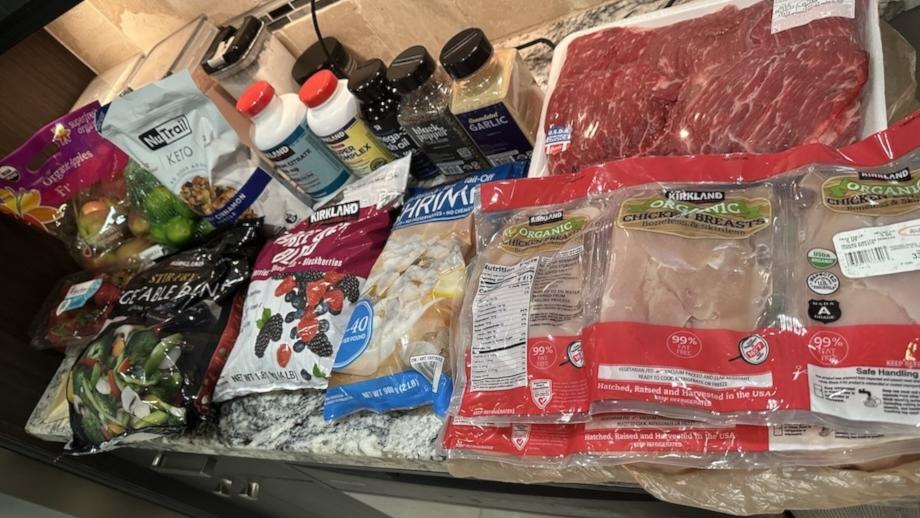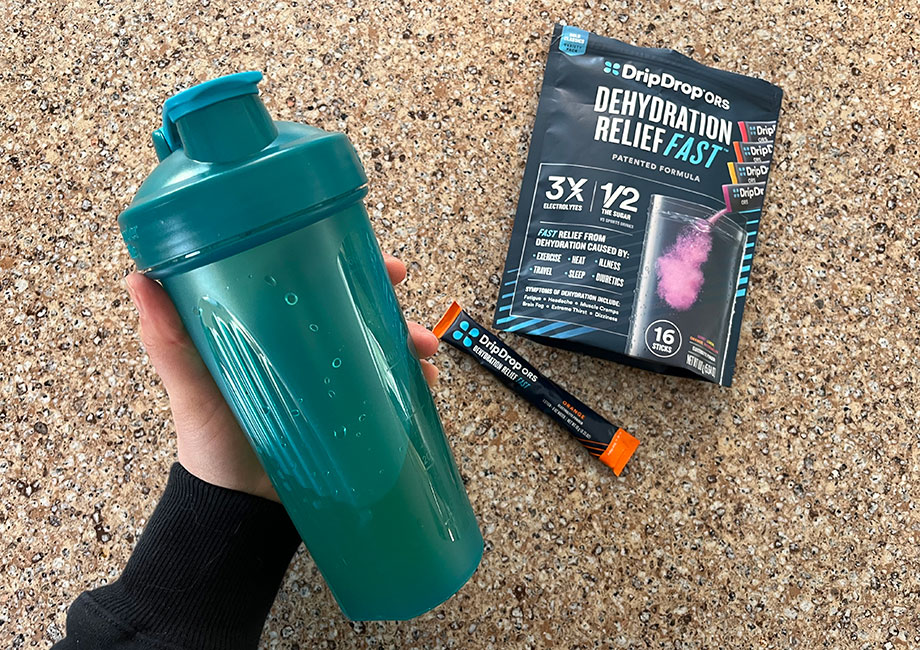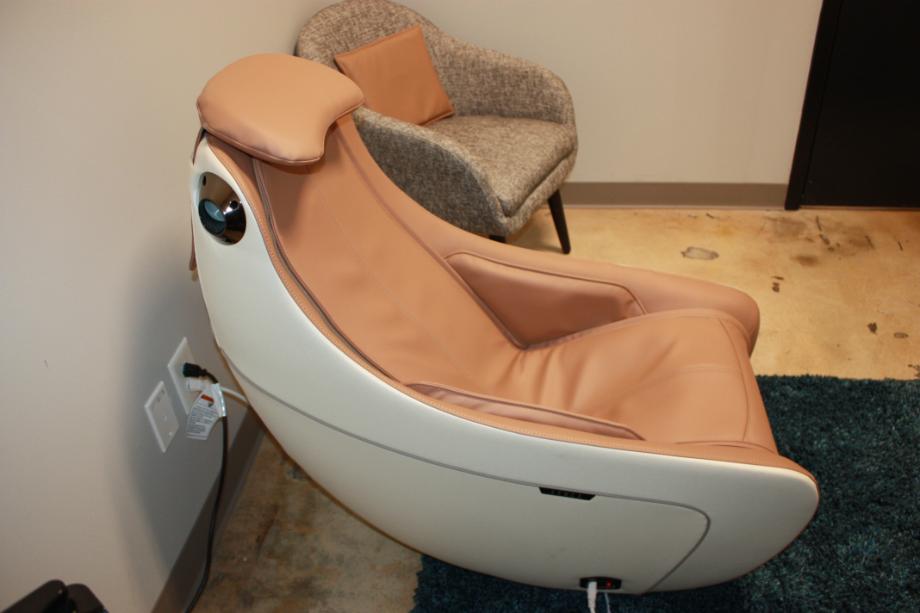In order to transform your body, you must first transform your mind.
I learned that lesson back in 2022 when I embarked on a major weight-loss journey that put me on a path to becoming a certified personal trainer (CPT). However, even after focusing all of my energy and effort on fitness, I found myself in a bit of a rut as the calendar turned to 2023. Coming off a calorie-packed holiday season that included far too many sweets and too little movement, I knew I needed something to get me back in gear physically and mentally.
RELATED: Exercise And Mental Health
Luckily, scrolling through social media actually brought something incredibly invaluable into my life: The 75 Hard Challenge.
The brainchild of 1st Phorm CEO and entrepreneur Andy Frisella, this transformative mental toughness program requires you to make some substantial lifestyle changes to build the discipline and fortitude you need to accomplish any goal. But what is the 75 Hard Challenge, exactly? And what results can you expect from following a strict set of rules for nearly three months?
Now that I’m about a year removed from completing the program, I can confidently say that my mind and body wouldn’t be the same without undergoing that difficult but rewarding experience. So, if you’re ready to take your physical and mental health to another level, let’s dive into the rules of the 75 Hard Challenge so you can prepare for the most pivotal phase of your life.
Key Takeaways
- The 75 Hard Challenge consists of 75 consecutive days including two 45-minute workouts, a nutrition plan of choice, reading 10 pages of a non-fiction book, drinking a gallon of water, no alcohol, and a daily progress photo.
- If you miss any of the tasks during the 75 days, you must restart from Day 1.
- The 75 Hard Challenge does not have any specific diet or workouts associated with it, just the requirement of consistent exercise and a personally selected nutrition plan.
- Results of the 75 Hard Challenge can include weight loss, muscle gain, healthier habits, and more motivation to exercise.
- Risks of the 75 Hard Challenge include potential burnout, injury, and nutritional deficiencies. We encourage consulting a healthcare professional before taking on the challenge.
What Are The 75 Hard Challenge Rules?
The program centers around a key concept that should be familiar to fitness enthusiasts: consistency. You must adhere to the following rules for 75 days:
- Follow a nutrition plan of your choice—no alcohol or cheat meals allowed.
- Complete two 45-minute workouts each day (one must be outdoors).
- Take a daily progress picture.
- Drink 1 gallon of water each day.
- Read 10 pages of a self-improvement book each day.
Here’s the hardest part: If you miss any of these tasks on any day, you must restart from the beginning.
1. Follow a Nutrition Plan of Your Choice
You’re always in control of what you put into your body. The 75 Hard Challenge embraces that philosophy by allowing you to pick any nutrition plan—aka diet—and not allowing you to consume a single cheat meal or drop of alcohol. That gives you plenty of flexibility to choose a diet that aligns with your preferences and training goals.

For some people, that may mean ditching carbs and going keto for 75 days. For others, it may mean diligently tracking your food intake so you hit specific macros for weight loss. I committed to a nutrition plan that included as many single-ingredient foods as possible (think paleo) and no junk food like cookies, chips, and ice cream..
RELATED: What Is the Keto Diet?
After one final night of binging on all that “fun” stuff, I loaded my fridge with fruits, vegetables, eggs, Greek yogurt, and just about any type of protein possible. I also stocked up on my favorite whey protein powder for shakes and smoothies.
Combining intermittent fasting with fueling up with primarily whole food sources changed my entire outlook on eating. I woke up refreshed, remained energized throughout the day, and eventually lost cravings for sugary treats. Instead, I gained a new appreciation for the mental clarity and body recomposition benefits of “eating clean” consistently.
As for no cheat meals? I found creative ways to make some of my favorite dishes using healthier ingredients. This makes sticking to an eating plan much easier.
What about no alcohol? As someone who doesn’t drink, it wasn’t a problem for me. However, it may be a challenge if you’re accustomed to having a cocktail or two in social situations.
Need some help on how to get started? Heed Destini Moody’s advice.
“The best direction is to find out, ideally through a registered dietitian, what your specific calorie and macronutrient requirements are for your goals and to construct balanced meals around these metrics,” she explains. “A balanced meal would be one that includes a lean protein, healthy carb and some kind of fruit or vegetable at the three main meals, with potential for snacks if the calorie allowance permits. Avoid foods with excessive added sugar, sodium, or saturated fat along with those that are overly processed.”
Overall, though, you have the power to choose your dietary path. It’s up to you not to veer off—at least not for 75 days.
2. Complete Two 45-Minute Workouts
Working out for a total of 90 minutes a day may seem daunting, especially when one of your 45-minute sessions must be outside. However, it’s all about perspective.
On one hand, you could view a pair of 45-minute workouts as tasks that’ll feel like torture.
On the other hand, you could look at them as opportunities to improve your cardiovascular fitness level, build strength and muscle, and flood your brain with endorphins.
Just like your diet, the 75 Hard Challenge lets you tackle this task any way you see fit. You could start every morning with a 45-minute walk and do a 45-minute resistance training session in the evening. You can mix up your routine with activities like yoga or pilates to keep things fresh and give your joints a much-needed reprieve.
RELATED: Pilates Vs Yoga
Destini Moody, an RD who specializes in sports nutrition, encourages participants to be intentional with their exercise selection.
“If participants don’t choose exercise that is intense enough or a form of exercise (i.e. weightlifting, steady state cardio, group classes, HIIT, etc.) that isn’t appropriate for their goals, then they could run into some trouble,” she explains.

During my 75 Hard journey, I made sure to put on my favorite podcast, playlist, or audiobook and get in a daily 45-minute walk. Between that and working at a commercial gym, I easily surpassed 10,000 steps a day. In addition, I performed full-body workouts and high-intensity interval training (HIIT) regularly to stay strong and powerful.
Was it always easy to get in two workouts a day? There were definitely times where I had to get a midnight walk in just to complete the outdoor requirement of this rule. And there were other days where working out when sore made 45 minutes seem like an eternity. However, if you follow a balanced routine that includes active recovery sessions and low-impact cardio, you can make significant progress in 75 days.
RELATED: How To Make a Workout Plan
3. Take a Daily Progress Picture
Accountability is paramount in all areas of life. The 75 Hard Challenge forces you to take a hard look in the mirror—literally and figuratively—by taking a daily progress photo. Depending on where you are in your fitness journey, this may engender negative feelings like guilt, shame, and disappointment.
But that will change.
If you’re sticking to your diet plan and two-a-day workout schedule, you will see tangible results. It won’t happen overnight. It won’t happen over two nights. But within two to three weeks, expect to see a leaner, more muscular version of yourself in the mirror.
RELATED: Workout Schedule for Beginners
I’ll admit I wasn’t eager about taking my shirt off and snapping a photo of my out-of-shape figure on Day 1. And even after a week I still dealt with body image issues and some negative self-talk. But the deeper I got into the program, the more I looked forward to taking a photo from the same angle in the same light to see just how different my physique looked.
“I love that the program encourages progress photos rather than taking weights, as weight can fluctuate dramatically enough to make tracking progress confusing and potentially discouraging,” says Destini Moody. “So, other metrics like progress photos and measurements are more favorable.”
Once you finish 75 Hard, you’ll be able to look back and appreciate the hard work and dedication it took to shed body fat and build muscle.
RELATED: How to Lose Body Fat
4. Drink a Gallon of Water
It’s no secret that hydration has a huge impact on your performance in the gym. It’s also equally important for maintaining cognitive function1 and operating at your best. The 75 Hard Challenge promotes this important health concept by requiring you to drink one gallon of water per day.
Don’t be surprised at how challenging it can be to consume that amount of H2O once you realize how badly you’ve been paying attention to your hydration. Even as a CPT and longtime athlete, I struggled to make it to the bottom of my gallon jug during the first week or so.
However, making sure to drink water throughout the day instead of leaving it all for the nighttime made a big difference. Adding electrolytes may make it easier to sip on while also providing key nutrients that’ll keep your body and brain fueled.

RELATED: Best Electrolyte Powder
5. Read 10 Pages of a Non-Fiction Book
The final rule of the 75 Hard Challenge ended up being perhaps the most impactful. What started as a chore quickly developed into an indulgence, as I went from reading 10 pages a day to plowing through chapters like a set of back squats.
This part of the program promotes self-development by requiring you to read 10 pages a day of a non-fiction book. To get started, I researched Reddit, TikTok, Instagram, and other social media platforms for recommendations. This helped me put together a list of books that I wanted to read over an 11-week stretch, including:
- “Atomic Habits” by James Clear
- “The 7 Habits Of Highly Effective People” by Stephen R. Covey
- “The Four Agreements” by Miguel Ruiz
- “Becoming Supernatural” by Dr. Joe Dispenza
Reading 10 pages of any book should make you a more well-rounded person. But sticking to ones specifically aimed at self-development and self-improvement can do wonders for your well-being and self-worth. Once you get bit by the reading bug, you’ll understand how some people can get through a captivating book in a single day.
My 75 Hard Challenge Experience
Don’t mistake this as just another fitness challenge. In fact, 75 Hard focuses less on meal plans and workout splits and more on developing discipline and willpower that’ll pay off outside of the gym.
Although I got visible abs for the first time, that aesthetic achievement paled in comparison to the mental gains I made. However, I won’t pretend that this wasn’t the most challenging stretch of my life. From fighting the urge to indulge my sweet tooth to struggling to finish my final sips of water before bedtime, it took every ounce of willpower to make sure I checked every box for 75 days straight.
While everyone’s experience will be different, I’ll break down each component of the 75 Hard Challenge so you can have a firm grasp of what to do, what difficulties you may face, and what strategies you can use to stay the course. Plus, Destini Moody, RD, CSSD, LD, board-certified sports nutrition specialist, and GGR contributor, shares her expert insight into #75Hard.
What Results Can You Expect From The 75 Hard Challenge?
Following five rules for nearly three months taught me many important lessons. First, I gained an even greater appreciation for self-discipline. Sticking to a consistent workout routine and staying on track with my hydration and nutrition helped me lose 30 pounds and drop my body fat percentage from 21% to around 14%. I looked and felt leaner than ever, had great energy, and still made strength gains in the gym.
RELATED: Weight Loss Statistics
In addition to the aesthetic benefits, I felt particularly proud about reading eight books in 75 days. While some books didn’t blow me away with anything particularly profound, others—such as “The 7 Habits of Highly Effective People”—inspired me to take an introspective look at my behaviors, thoughts, and motivations. I picked up many useful tips to increase my productivity and decrease stress, which is something all of us could benefit from.
While results will vary on an individual basis, you should make improvements in your physical and mental health by tackling the 75 Hard Challenge. Your progress may not necessarily be linear, but I promise you’ll be a much different person on Day 75 than you were at the beginning.
Who Should Do the 75 Hard Challenge?
The 75 Hard Challenge is not easy, and if you’re brand new to exercise, performing two workouts per day can be very challenging. We recommend this challenge for anyone who’s been at least somewhat active recently, otherwise it may be too difficult to properly recover from.
You’ll also want to make sure this works with your schedule. If you’re very busy, or have vacation and travel ahead, you may want to wait until you’re going to be in one place with enough time to dedicate to this challenge.
Potential Benefits Of 75 Hard
75 Hard is very challenging, which is the point, but is it worth it? That’s an individual decision you need to make for yourself, but if you decide to give it a try, here are some of the benefits you can expect after 75 days.
- Improved strength and cardiovascular fitness
- Improved self-discipline
- Increased muscle mass and decreased body fat
- Potentially improved mental health
Safety Considerations
Although I’m an advocate of #75Hard, I’ll also admit it’s not for everyone. This program demands a level of discipline that most people simply don’t have in their toolkit. Based on my experience, here are some of the risks and drawbacks of this transformative challenge:
- Risk of burnout: The strict nature of the program can lead to both physical and mental exhaustion, especially if you aren’t diligent about rest and recovery.
- Lack of flexibility: Unless you do 75 Soft, you have no wriggle room. That means no cheat meals, no alcohol, no skipped workouts, no missed progress photos, and no excuses about not finishing your gallon of water.
- Sustainability: Can you adhere to five rules for 11 weeks? Sure. But is it feasible to live this way forever? For the majority of people, the answer is probably no.
- Potential nutritional deficiencies: If you’re not well-versed in dieting, you run the risk of not supplying your body with the right nutrients. From under consuming protein to being deficient in vitamins and minerals, you can set yourself up for failure if you’re not on point with your food intake.
- Injury potential: Two workouts a day for 75 days straight inherently increases your risk of getting hurt. Your muscles, tendons, ligaments, and joints will have to handle a bigger workload than ever. If you’re not mindful about recovery, you could suffer a setback that’ll derail your journey.
RELATED: How To Speed Up Muscle Strain Recovery
Who Should Avoid the 75 Hard Challenge?
As we mentioned earlier, those new to exercise should avoid this challenge. Two workouts per day is intense for anyone, and when you’re just getting started with exercise, you may find yourself very sore after workouts. Proper recovery is essential, so you’ll want to make sure that you’re physically prepared for this kind of challenge.
Furthermore, Destini Moody, RD, CSSD, LD, board-certified sports nutrition specialist and author at Garage Gym Reviews, warns that people with a history of eating disorders should approach programs like this with caution.
“The structure could cause obsessive behaviors that could lead to a relapse,” she explains. “This is especially true given the rule that “no meals outside of your chosen diet are allowed” when cheat meals are critical for some to maintain their positive relationship with food and the elimination of a “good food, bad food” mentality.”
What Is the 75 Hard Challenge: Final Thoughts
The aptly named 75 Hard Challenge will test your ability to stay committed unlike anything else you’ve encountered. It will force you to replace bad habits with new ones that’ll help you become a healthier person on all levels.
Once you decide to take on the program, go all-in on creating a stronger, fitter version of yourself. Any time you’re tempted to reach for a treat or skip a workout, ask yourself if you’re willing to start from Day 1 again. Is a momentary reward worth sacrificing weeks of disciplined choices?
By the time you wrap up 75 Hard, you won’t struggle to answer that question again. The only question you’ll be left with is, “Why stop at 75?”
What Is the 75 Hard Challenge: FAQs
Who created the 75 Hard Challenge and what is its purpose?
Entrepreneur and author Andy Frisella created the 75 Hard Challenge to help people develop mental toughness and discipline by implementing healthy habits. This physical and mental fitness program can be an effective way to build self-esteem and a fitter, stronger body.
What are the rules for the 75 Hard challenge?
There are five rules for the 75 Hard challenge: Follow a nutrition plan of your choice, perform two 45-minute workouts daily (one must be outside), drink a gallon of water, read 10 pages of a non-fiction book, and take a daily progress picture. If you miss any of the tasks, you must restart from Day 1.
Does walking count for 75 Hard?
Yes, a 45-minute walk can count as one of the two daily workouts for 75 Hard. As a certified personal trainer, I also recommend including strength training and high-intensity interval training (HIIT) for a balanced fitness plan.
What health benefits does the 75 Hard Challenge claim to provide?
The 75 Hard program claims to provide health and wellness benefits such as increased mental toughness, physical fitness, discipline, self-esteem, and self-confidence. Many people also experience weight loss as a result of the lifestyle changes associated with this program.
What Is 75 Soft?
75 Soft is a modified version of the 75 Hard program that’s far less strict. For example, you only have to work out for 45 minutes a day instead of completing two 45-minute workouts, drink three liters of water instead of a gallon, and you’re allowed to consume alcohol on social occasions.
References
- Adan A. (2012). Cognitive performance and dehydration. Journal of the American College of Nutrition, 31(2), 71–78. https://doi.org/10.1080/07315724.2012.10720011








